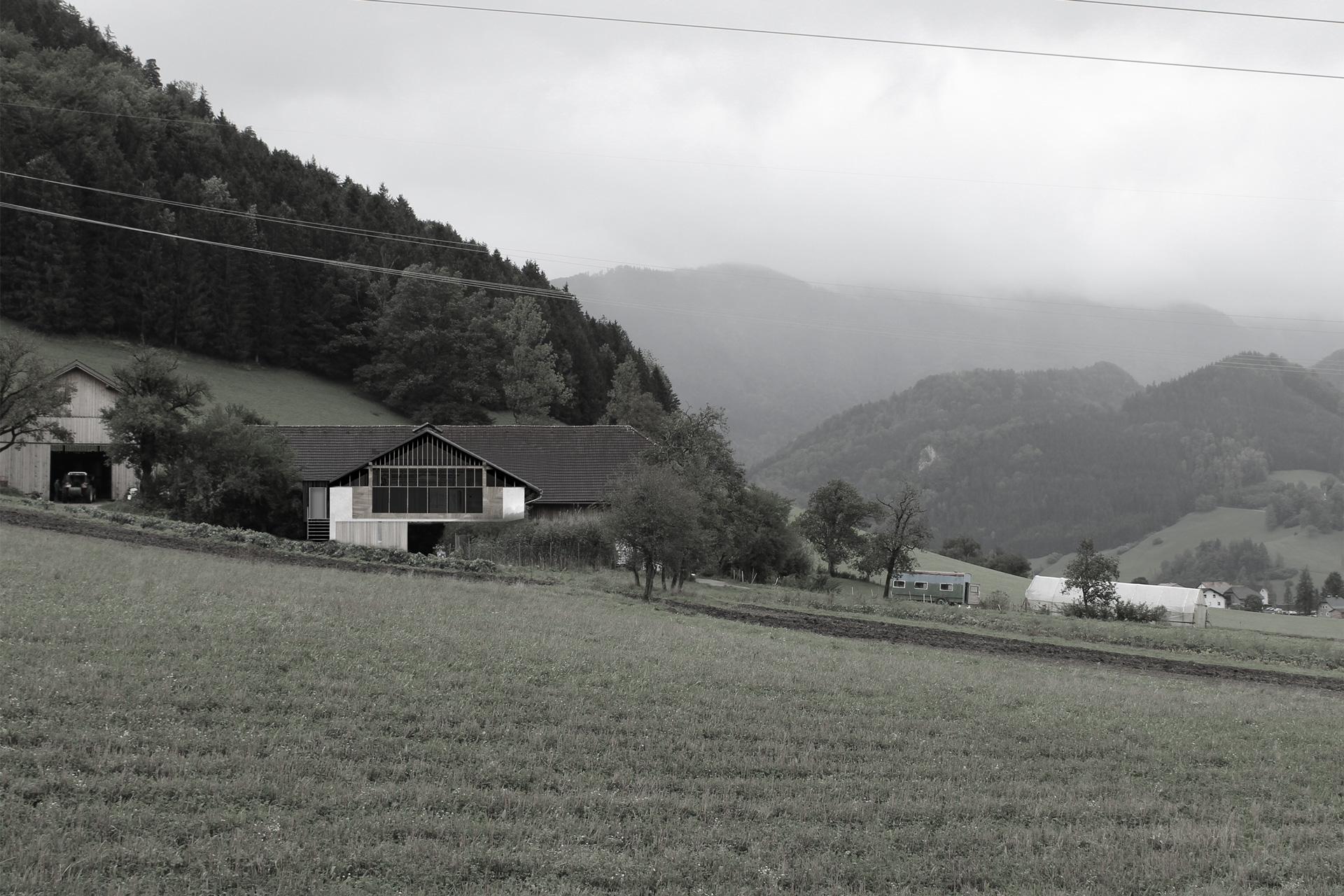10/2022
Kleinortbauer – about the architectural re-interpretation of traditional farmstead structures
How can traditional structures in need of renewal be revitalised in response to agricultural structural change? How can they be designed to be sustainable, functional and economically attractive to the owner or buyer?
Valentin Sommergruber
Diploma in Architecture
E251-1 – Baugeschichte und Bauforschung
Supervisor: Andrea Rieger-Jandl
New rural structures and the trend towards intensified agriculture are forcing many farmers to reconsider their operational structures or even to give up farming altogether. Lack of prospects and the need for financial security are driving the rural population to migrate to urban areas. This is followed by abandonment and stagnation of existing buildings, as well as uncertainty about the future of traditionalism in rural areas. In parallel, the rural space suffers from a non-future-oriented building policy that contributes to the continuous sprawl and sealing of land in Austria. The domestic farm is highly valued in the Austrian cultural landscape and should not be neglected, especially since it serves as an integral part of agriculture and plays an ecological role in rural spatial development. Its identity-forming role in the rural space also positions the farm as the protagonist of this work. No other architectural structure shapes the rural landscape to the same extent.
This master’s thesis examines the architectural and socio-economic questions that face local farmers due to structural changes in agriculture. Farmers with small farmsteads are struggling to keep up with the fast pace of big agriculture growing ever larger; they are less and less able to compete and are slowly being pushed out. In order to preserve farmsteads and the value they add to the identity of rural landscapes, this thesis presents alternative methods for repurposing and enhancing traditional structures. Using the example of a real farm in Großraming, Upper Austria, different architectural solutions are showcased that could revitalise the existing assets, both structural and operational. The final architectural concept is based on intensive research of agricultural conversion and natural building methods, as well as a thorough analysis of the 250-year-long history of the “Kleinortbauer”. The revitalisation methods discussed in this thesis should serve as an example and inspiration for other projects facing similar challenges.
New rural structures and the trend towards intensified agriculture are forcing many farmers to reconsider their operational structures or even to give up farming altogether. Lack of prospects and the need for financial security are driving the rural population to migrate to urban areas. This is followed by abandonment and stagnation of existing buildings, as well as uncertainty about the future of traditionalism in rural areas. In parallel, the rural space suffers from a non-future-oriented building policy that contributes to the continuous sprawl and sealing of land in Austria. The domestic farm is highly valued in the Austrian cultural landscape and should not be neglected, especially since it serves as an integral part of agriculture and plays an ecological role in rural spatial development. Its identity-forming role in the rural space also positions the farm as the protagonist of this work. No other architectural structure shapes the rural landscape to the same extent.
This master’s thesis examines the architectural and socio-economic questions that face local farmers due to structural changes in agriculture. Farmers with small farmsteads are struggling to keep up with the fast pace of big agriculture growing ever larger; they are less and less able to compete and are slowly being pushed out. In order to preserve farmsteads and the value they add to the identity of rural landscapes, this thesis presents alternative methods for repurposing and enhancing traditional structures. Using the example of a real farm in Großraming, Upper Austria, different architectural solutions are showcased that could revitalise the existing assets, both structural and operational. The final architectural concept is based on intensive research of agricultural conversion and natural building methods, as well as a thorough analysis of the 250-year-long history of the “Kleinortbauer”. The revitalisation methods discussed in this thesis should serve as an example and inspiration for other projects facing similar challenges.
Diploma in Architecture
E251-1 – Baugeschichte und Bauforschung
Supervisor: Andrea Rieger-Jandl
